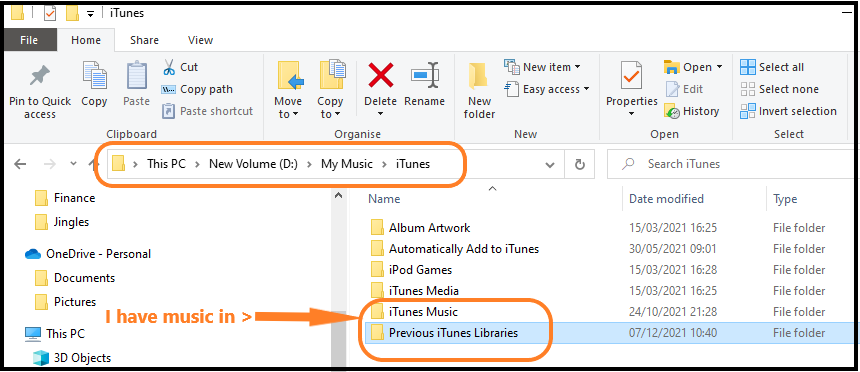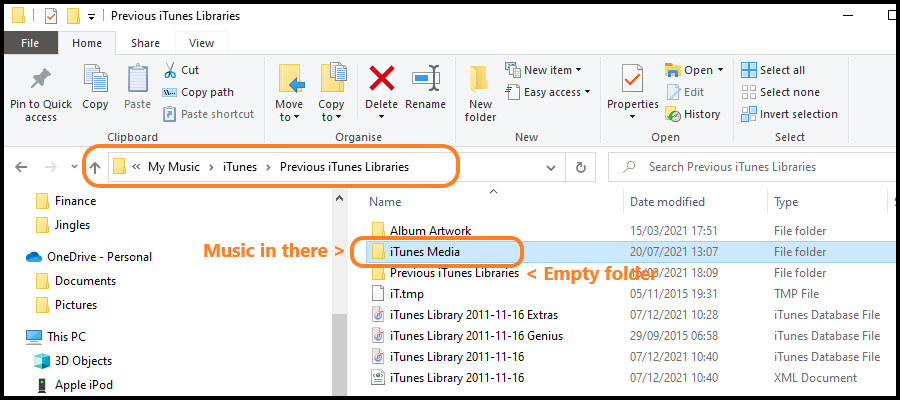iTunes is simply a database, the music is not "in iTunes". Instead, it is listed in iTunes and stored "on your computer". So you should use Windows Explorer to look for the files for those songs. But be extremely careful about changing anything in Windows Explorer (more later).
The usual storage location for music ripped from CD into your Library is your Windows default Music folder, as follows (note that the iTunes Music may be iTunes Media, or you may even have both folders):
- single artist albums - C:\Music\iTunes\iTunes Music\<artist name>\<album title>\<song title>
- compilation (various artist albums): C:\Music\iTunes\iTunes Music\Compilations\<album name>\<song title>
Note the difference between a single artist album and a compilation and that the <...> is is to be replaced by the name/title itself.
My Library is stored as follows (notice that I use my D drive, rather than C):
- single artist albums - D:\My Music\iTunes\iTunes Music\Bessie Smith\Great Original Performances 1926-1934\05 Trombone Cholly.m4a
- compilation: D:\My Music\iTunes\iTunes Music\Compilations\Summer Sounds Express #2\2-02 Summertime.m4a
In the examples above:
- Trombone Cholly; the 05 is the track number. It may, or may not, be included in the song title part of the filename
- Summertime; notice that the artist is not included in entries for compilation albums
(Summertime is performed by Billie Holiday, in case it's your sort of Blues and you were curious.)
You should also check for a Previous iTunes Libraries folder. I have one. Look at the screenshots below, I have music scattered in both an iTunes Music folder, and a Previous iTunes Libraries folder.

In the Previous iTunes Libraries folder you see above, there is:
- an empty Previous iTunes Libraries folder, well, empty of music. It does contain old iTunes .itl files.
- another iTunes Media folder. In there is a further sub-folder, named Music, which has more music listed in my Library.

I know this may look a mess, but it's simply a reflection of iTunes evolving and having a large library. It's just one of those things. (I also have another folder, containing Amazon purchases (don't tell Apple that I buy elsewhere).
You can use Windows Explorer to search for tracks. Since CD rips should be named with the song title, use Explorer to search for that title:

Right-clicking on either area of text will open a context menu, on which you will find:
- Open file location - which will do just that, open the folder containing the file
- Properties - useful to check which search result is the one you're after (e.g. the m4a copy or the MP3 version)
One last thing: remember that I said be extremely careful about changing anything in Windows Explorer? If you change the filename for a file in Windows Explorer, iTunes will then not be able to find the file (under it's original name) since you have effectively removed it. Don't forget, iTunes simply lists the songs. Every time you want to play a song or copy it to a device, it looks for the file under the name it knew about when it was added to the Library.